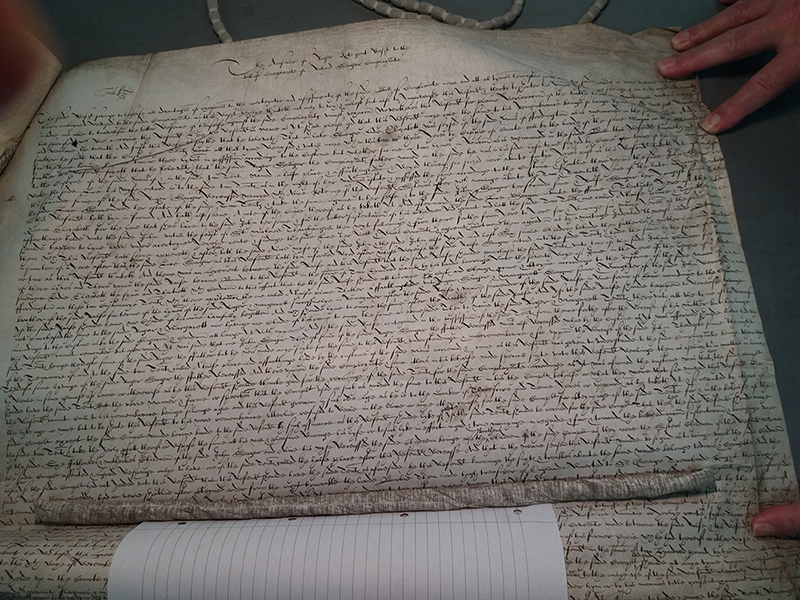Margery, the wife of Anthony Eames of Fordington and Plymouth Colony.
An Investigation into her family origins.
©Helen M Ford helenford.dorset@gmail.com.
couple’s earlier children occurred during those periods for which we have no copy of the register.
The Will of Roger Kete
Roger Kete’s will, written on the 15th March 1619, has long been cited as proof that Anthony Eame’s wife was named Margery but the information in the rest of the will seems to have been neglected. The will not only identifies her name but the fact that she was a kinswoman of the testator. There were other kinswomen but no wife or children and no relatives named Kete.
Roger Kete styled himself as a gentleman of Fordington. It is quite apparent that he was a relatively well-off member of society, he left feather beds, rugs, coffers and even ‘a greate wine chest’. He carefully divided all his household belongings between the legatees. His bequests, other than to the parish were as follows :
To his kinswoman Millicent Turner, the wife of William Turner, a cupboard and £5
To his kinswoman Lucy Seager, daughter of John Seager, a feather bed, bolster, pillows, rug, sheets, blankets, cupboard, pots, desks, coffer. She was also to receive the proceeds of a bond owned to Kete by John Winsor and £10
To Roger Turner, son of Millicent, a house and grounds, Fordington for the period that the lease still had to run. He also received, a bed, bolster, Arras, desk,rug, sheets, pans and crocks together with £5.
To his kinswoman Margery Emes, the wife of Anthony Eames, 40 shillings, the best pewter charger, a standing bedstead, a yarn covelet.
To Margery’s son Mark, 40 shillings, an underbead, feather bolster.
To godson, Thomas Eames, the son of John Eames, 10 shillings.
To godson Roger Turner, 10 shillings (to unnamed godchildren 2s 6d each)
To Henry Howman the elder, a bason and ewer, brass candlesticks, a chest.
To Alice Clark wife of William Clarke, a featherbed, kettle crock.
To kinswoman, Virtue, the wife of Henry Howman, a green dish, a sheet of (network?) and 5 marks [a mark was worth 13s 4d].
To all the children of his kinswoman Millicent Turner, Henry Howman and Anthony Eames £4 each to be received at 21 years of age
To Henry Howman the elder, money due from a bond towards the payment of the fine payable following Henry’s purchase from Roger of two copyhold tenements. Henry Howman also received a brass pan and crock.
To Alice Howman, daughter of Henry, a featherbed, bolster, 40s in money and Roger’s interest in a tenanted burgage in Dorchester
To Henry Garrett and his wife, 40s a year towards their maintenance, from the rents of a burgage in All Saints, Dorchester.
To Luce and Judith, daughters of Richard Seager, 20 shillings each.
To Humfrey Jollife, a greate wyne chest.
To William Sperring, a plate trunk chest.
3 |









